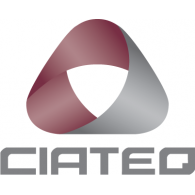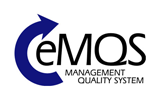Acceso a la documentación del Sistema de Gestión de Calidad de CENAPROT
En este vínculo se puede acceder al sistema eMQS
Sistema de reservas de Equipos de CENAPROT
Para hacer uso de cualquiera de los equipos que integran el CENAPROT, es necesario contar con la autorización del Responsable Técnico de CENAPROT y posteriormente realizar un registro en línea.
Contactar al responsable del CENAPROT para mayor información.
Dr. Juan Muñoz
+52 (442) 2119924
Consideraciones y requisitos que se deben tener antes de solicitar una reserva:
Capacitación
Se debe contar con la capacitación sobre el uso y manejo del equipo (formato RG/CE-LI/009/2014). Este formato se puede descargar ingresando el usuario y contraseña, en el módulo Archivos/Calidad Documental/Formatos.
En caso de no contar con la capacitación, solicitarla al asesor o responsable del laboratorio y emplear el formato citado.
Manual del equipo
Adicional a la capacitación, el usuario tiene la responsabilidad de estudiar el manual del equipo y tenerlo disponible durante la operación del equipo. Los manuales se pueden descargar ingresando el usuario y contraseña, en Módulos disponibles/Archivos/Manuales de equipos.
Equipo de protección personal
Es necesario tener el equipo de protección personal adecuado de acuerdo a las recomendaciones del fabricante (manual) y asesor (formato CE-F-CA-008-2015). De no contar con el equipo de protección adecuado, este debe ser solicitado a través del formato citado. Este formato se puede descargar ingresando el usuario y contraseña, en el módulo Archivos/Calidad Documental/Formatos.
De no cumplir los requisitos de seguridad o detectarse mal uso de los equipos se restringirá el uso de los mismos.
Una vez que se han cumplido los requisitos y tomado en cuenta las consideraciones mencionadas, se puede acceder al sistema de reservas  para realizar la reserva de equipos.
para realizar la reserva de equipos.
- Detalles
- Escrito por Super User
- Categoría: sin categoría
- Visto: 6001
General Info
Location:
The ICSE-Q will be held in the Misión Juriquilla Hotel in Querétaro, México from June 22nd to 24th 2016. Widely recognized personalities in the surface engineering inclduing thermal and cold gas spray deposition as well as high vacuum (PVD and CVD) fields have been invited to present keynote talks. Additionally, poster sessions are organized to incentivize discussion groups in topics related to surface engineering.
Accomodation
Hotel Mision Juriquilla Queretaro offers first class accommodation in a renovated eighteenth century farmhouse, at the north of the city of Queretaro, surrounded by gardens and buildings that evoke the colonial Mexico. An ideal scenario for huge conventions, business groups, weddings and guests who enjoy a refined, always with the tradition of hospitality for Hoteles Mision.
It has 192 standard rooms and 4 suites, with services and amenities of first class. Also offers 13 rooms with capacity from 10 up to 2000 people with services to perform the wedding of your dreams, special events, parties and business meetings, more info here http://www.hotelesmision.com.mx/e_queretaro_juriquilla.php
About Queretaro
Divided into 18 municipalities, Querétaro combines interesting history with the magnificence of nature, the joy of good life with the adrenaline of extreme sports. It has two zones that have been declared a World Heritage by UNESCO: zone of monuments of historical center of Santiago de Querétaro and the five Franciscan Missions of Sierra Gorda, which were universal apotheosis of Baroque art.
The mountainous region has been declared a Biosphere Reserve due to biodiversity and different ecosystems. Also there are beautiful villages like Tequisquiapan and Bernal, surrounded by vineyards and dairies. Queretaro is a privileged area due to its excellent location, modern infrastructure and connectivity, quality of life and diversity in touristic destinations fusing centuries of history, art and culture, in addition to extraordinary natural beauty.
In the central valleys including Santiago de Querétaro, San Juan del Río and sorroundings) the weather is mild and quite pleasant most of the year, the temperature ranges between 15 º and 28 º C on June.
(http://queretaro.travel)
Contact information
Please feel free to contact us for any further questions or comments at Esta dirección de correo electrónico está siendo protegida contra los robots de spam. Necesita tener JavaScript habilitado para poder verlo.
+52 442 2119924
+52 442 2119900 X1559.
- Detalles
- Escrito por Super User
- Categoría: sin categoría
- Visto: 3241
CALL FOR PAPERS
abstract submission to the ICSE-Q 2016 can be done directly to our system, using the username and password provided in the Registration section
- Detalles
- Escrito por Super User
- Categoría: sin categoría
- Visto: 3110
General Info
Location:
Sistema de reservas de Equipos de CENAPROT
Para hacer uso de cualquiera de los equipos que integran el CENAPROT, es necesario contar con la autorización del Responsable Técnico de CENAPROT y posteriormente realizar un registro en línea.
Contactar al responsable del CENAPROT para mayor información.
Dr. Juan Muñoz
(442) 2119924
Consideraciones y requisitos que se deben tener antes de solicitar una reserva:
Capacitación
Se debe contar con la capacitación sobre el uso y manejo del equipo (formato RG/CE-LI/009/2014). Este formato se puede descargar ingresando el usuario y contraseña, en el módulo Archivos/Calidad Documental/Formatos.
En caso de no contar con la capacitación, solicitarla al asesor o responsable del laboratorio y emplear el formato citado.
Manual del equipo
Adicional a la capacitación, el usuario tiene la responsabilidad de estudiar el manual del equipo y tenerlo disponible durante la operación del equipo. Los manuales se pueden descargar ingresando el usuario y contraseña, en Módulos disponibles/Archivos/Manuales de equipos.
Equipo de protección personal
Es necesario tener el equipo de protección personal adecuado de acuerdo a las recomendaciones del fabricante (manual) y asesor (formato CE-F-CA-008-2015). De no contar con el equipo de protección adecuado, este debe ser solicitado a través del formato citado. Este formato se puede descargar ingresando el usuario y contraseña, en el módulo Archivos/Calidad Documental/Formatos.
De no cumplir los requisitos o detectarse mal uso podría restringirse el uso de los equipos.
*********
Medidas de Seguridad en la sede principal de CENAPROT
Manual de seguridad y bioseguridad de CENAPROT
Conocer el Manual de Seguridad y Bioseguridad es un requisito obligatorio para hacer uso de las instalaciones o cualquiera de los equipos que se encuentran en CENAPROT.
Accesos controlados
El acceso a los diferentes laboratorios que conforman la sede del CENAPROT en Cinvestav Querétaro, será restringido, a fin de establecer controles de seguridad que permitan evitar y reducir riesgos a la seguridad de los usuarios.
El acceso será otorgado únicamente al personal que ha cumplido con las capacitaciones mínimas necesarias para la correcta operación de los equipos (formato RG/CE-LI/009/2014).
Con estas medidas se busca prevenir la ocurrencia de lesiones personales, daño al equipo e infraestructura.
Monitoreo
Siendo que los procesos de proyección térmica involucran diversos puntos de riesgo, se implementó un sistema de monitoreo de las actividades, operaciones y personal dentro de los laboratorios y en la periferia de las instalaciones donde se considera que pueda existir cualquier tipo de riesgo a la seguridad personal, de las instalaciones e infraestructura.
- Detalles
- Escrito por Super User
- Categoría: sin categoría
- Visto: 2648
Medidas de seguridad en la sede principal de CENAPROT
Manual de seguridad y bioseguridad de CENAPROT.
Conocer el Manual de Seguridad y Bioseguridad es un requisito obligatorio para el uso de las instalaciones o cualquiera de los equipos que se encuentran en CENAPROT.
Accesos controlados
Acceso a los diferentes laboratorios que conforman la sede del CENAPROT en Cinvestav Querétaro, será restringido, un fin de establecer los controles de seguridad para evitar y reducir los riesgos a la seguridad de los usuarios.
El acceso RG / CE-LI / 009/2014 (formato RG / CE-LI / 009/2014 ).
Con estas medidas se busca prevenir la ocurrencia de lesiones personales, daños al equipo e infraestructura.
Monitoreo
Siendo que los procesos de proyección térmica involucran diversos puntos de riesgo, se implementa un sistema de monitoreo de las actividades, operaciones y personal dentro de los laboratorios y en la periferia de las instalaciones donde se considera que puede existir un tipo de riesgo a la seguridad Personal, de las instalaciones e infraestructura.
Sistema de reservas de equipos de CENAPROT
Para poder utilizar cualquiera de los equipos que integran el CENAPROT, es necesario contar con la autorización del Responsable Técnico de CENAPROT y luego realizar un registro en línea.
Contactar con el responsable del CENAPROT para mayor información.
Dr. Juan Muñoz
(442) 2119924
Consideraciones y requisitos que deben tenerse antes de solicitar una reserva:
Capacitacion
Se debe contar con la capacitación sobre el uso y manejo del equipo (formato RG / CE-LI / 009/2014 ). Este formato se puede descargar ingresando el usuario y la contraseña, en el módulo Archivos / Calidad Documental / Formatos.
En el caso de no contar con la capacitación, solicitar el asesoramiento técnico.
Manual del equipo
Adicional a la capacitación, el usuario tiene la responsabilidad de estudiar el manual del equipo y tenerlo disponible durante la operación del equipo. Los manuales se pueden descargar ingresando el usuario y la contraseña, en Módulos disponibles / Archivos / Manuales de equipos.
Equipo de protección personal
Es necesario tener el equipo de protección personal adecuado de acuerdo a las recomendaciones del fabricante (manual) y asesor (formato CE-F-CA-008-2015). De acuerdo con el equipo de protección adecuado, este debe ser solicitado a través del formato citado. Este formato se puede descargar ingresando el usuario y la contraseña, en el módulo Archivos / Calidad Documental / Formatos.
De no cumplir con los requisitos o detectar mal uso podría restringir el uso de los equipos.






